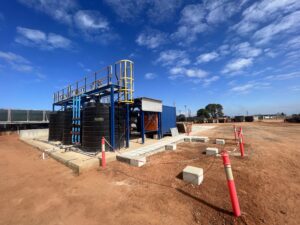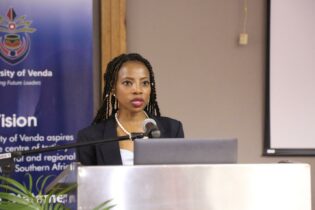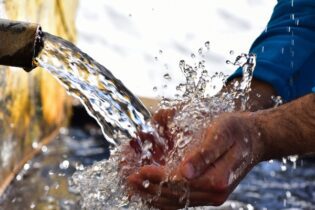The demand for water will exceed the available supply by 2030 – that’s a 10% to 15% deficit. Kate Stubbs unpacks how creating a much more diverse and sustainable water mix can alleviate South Africa’s water crisis.
Seven of the 13 major water systems in South Africa are predicted to be in deficit by 2040. Worse yet, the National Water and Sanitation Master Plan indicates that if serious action is not taken timeously, the demand for water will exceed the available supply by 2030. The reality is that even though 2040 is still far off, if we look at certain areas in South Africa as use cases – such as the Eastern Cape – there is no doubt that ‘Day Zero’ may well come sooner than we anticipate. In fact, the Green Drop 2022 report indicated that 102 of South Africa’s water systems have scored below 31%, with over half of all municipal wastewater systems identified to be in a critical state. This, coupled with the fact that we are a water-scarce country, raises the critical need to change our behaviour towards the use and preservation of this precious resource. It is then no surprise that government has placed an urgent focus on both water preservation and availability to improve sustainable water supply, safe water and wastewater service delivery in the short term. However, much needs to be done if wastewater and effective water treatment are to become safer for consumption and delivered to communities across the country. In our experience, effective wastewater management can result in the redistribution of water into the environment for irrigation and dust suppression, as well as to replenish rivers and catchments in our water infrastructure networks. And while we have had a very rainy season, it will not last forever. And so, large water-consuming industries need to consider the different technologies available to drive this agenda. Wastewater treated to the required standards ensures this water can be effectively reused. Nearly all effluent can be recycled, if done properly, creating a strong solution for water sustainability and access – water that was previously not deemed safe for consumption. However, if we consider the investment needed to reach the UN’s 2030 Sustainable Development Goals related to water alone, which equates to US$114 million (R2.03 billion) per annum, then we have to realise that this is not a one-man job. Fundamentally, if we don’t work together to tackle both supply and preservation, we are set to lose the battle. So, what is needed to curb the currently inevitable? At the outset, we need to create a much more diverse water mix, including groundwater and wastewater reuse, if we hope to protect this scarce resource and create a water supply that is safe and consistent. We must start by addressing areas in which we can immediately tackle water supply issues. If we consider that the main source of pollution is from wastewater treatment plants and there is increasing contamination of our waterways from various waste types, there is no doubt that, as the population grows and we witness more urbanisation, this is a critical starting point. In fact, from a waste perspective, waste management companies form a cornerstone to securing safe water for South Africa’s commercial and private use, and are striving towards driving such change in the country to conserve, manage and repurpose water, as well as play their part in fighting climate change.In this space, some waste companies are using various technologies to treat and process effluent streams to a level where they can be recycled and reused for various purposes.
Similarly, legislation such as the ban of liquid waste disposal to landfill, for example, and rising ESG pressures are driving innovation in the waste sector as well as forcing corporate South Africa to be more agile in their approach to the use, reuse and impact on our water supply. Wastewater, and the treatment thereof, has therefore become a critical consideration in addressing scarcity and safety issues. Let’s take effluent water treatment as an example. If treated to the required standards – as set out by national environmental agencies – this water can be reused effectively. As nearly all effluent can be recycled, if done properly, a large bank of water could become available, which previously may not have been considered as ‘safe’ for the environment or community.







